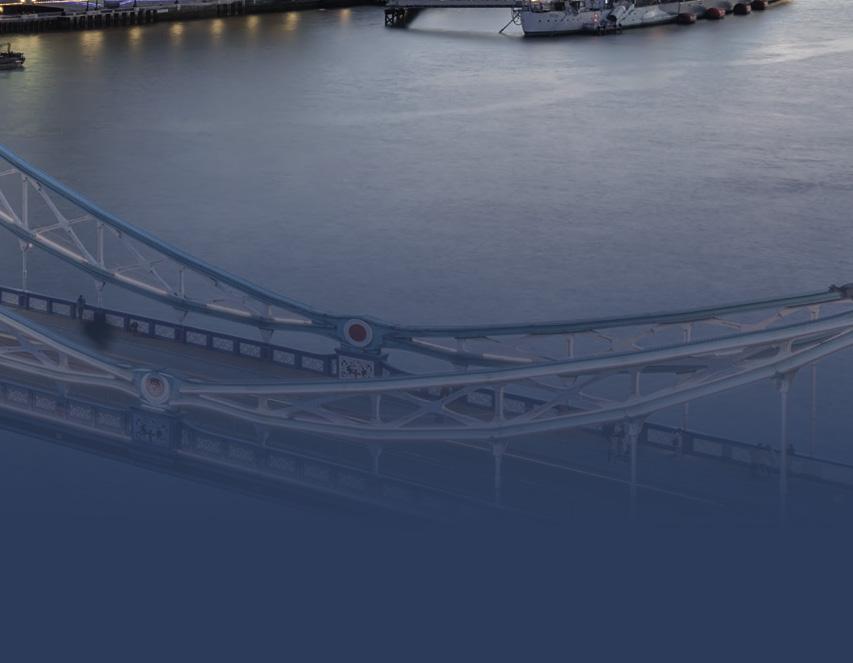DAF DRIVER











• Want ultimate flexibility?
• The option to return the truck at the end of the agreement, if you wish?
• Or the option at maturity to purchase at a cost fixed at day one – even if its market value turns out to be much higher at maturity?
• Want to claim capital allowances to ensure it’s a tax efficient deal for your business?
• Want to defer paying the VAT for up to three months?
• Want to pay a large deposit to reduce monthly rentals?
• Want to pay no deposit to free up cash to use elsewhere in the business?
Sounds too good to be true? Well, all this is possible with Contract Purchase, which could be the ideal solution for your fleet replacement plans. Your local PACCAR Financial Regional Manager is waiting to provide a bespoke quotation to meet your requirements.






salessupportuk@paccar.com







WELCOME TO ISSUE 36 OF DAF DRIVER MAGAZINE!
Publishing at the turn of the year, this issue of DAF Driver Magazine sees us say farewell to the old and welcome in the new.
Publisher - Matthew Eisenegger

The farewell is to the unsung hero of the DAF range: the LF lightweight truck. And the welcome is to the latest iteration of the New Generation of DAF trucks, which feature a wide range of modifications to meet the challenges of the trucking world beyond 2025.
Although perhaps overshadowed by its larger stablemates, the LF was a masterpiece of innovation and adaptability, using cabs, engines and transmissions developed in conjunction with other manufacturers, and being assembled at what has to be one of the most versatile truck manufacturing plants in the world on the same line that builds the larger DAF trucks. And if that wasn’t enough, it was the first truck in the western world to be offered with the option of factory-installed bodywork.
Although it dominated its market segments in the UK, it was also a successful export, not just to Europe but to many countries all over the world. You can read more about it on page 14.
Now it has been replaced by the XB, which forms part of the New Generation of DAF trucks: and this New Generation is already into its second iteration with further refinements to suit it to ever more demanding safety and environmental requirements. Anyone who thought the launch of battery-electric trucks meant the end of diesel development was clearly wrong. The diesel engines of the latest New Generation trucks incorporate some innovative features that will reduce emissions while boosting productivity and profitable operation for years to come. A key part of that is also keeping drivers comfortable, safe, and happy, and the New Generation trucks pack plenty of features designed to do just that.
The central role of drivers not only in the transport industry, but the economy as a whole has always been celebrated by DAF Trucks, and this issue contains a report direct from the fourth DAF UK & Ireland Driver Challenge. This is a competition which is open to professional drivers of all makes of trucks and includes 11 regional heats plus a final which tests the contestants’ skill and concentration to the absolute limit. Find out who went home with the trophy in our report.
No one ever feels like a winner when their truck breaks down, but the DAFaid roadside repair and recovery service means that unexpected failures are less of a pain in a DAF than other makes of truck, thanks to the manufacturer’s massive network of workshops and fleet of roadside assistance vans and recovery trucks. While operators and drivers hope to never have to use DAFaid, it’s reassuring to know that it’s there.
In this issue we hear from some of those at the frontline in DAFaid about how the service has evolved over the years. Major mechanical breakdowns are now very rare, but the increasing sophistication of the various systems built into trucks mean that the odd niggles still appear. Our feature explains what the most effective action to take is when they do, and the vital role the roadside technicians play in getting trucks back on the road.
There’s plenty more, ranging from a feature on one of the oldest transport companies in Cornwall to the chance to win a prestigious 1:50 scale model of a New Generation DAF XG FT truck and tri-axle trailer.
Enjoy the issue, and have a great New Year!





EDITORIAL
Publisher: Matthew Eisenegger
Managing Editor: Richard Simpson
Designer: Harold Francis Callahan
Editorial Address: Commercial Vehicle
Media & Publishing Ltd, 4th Floor 19 Capesthorne Drive, Eaves Green, Chorley, Lancashire. PR7 3QQ Telephone: 01257 231521
Email: matthew@cvdriver.com
ADVERTISING
Advertising Sales: David Johns Telephone: 01388 517906
Mobile: 07590 547343
Pint-size



Email: sales@cvdriver.com
DESIGN
Art Editor: Harold Francis Callahan Telephone: 01257 231521
Email: design@cvdriver.com
CONTRIBUTORS
Steve Banner
Bob Beech
Ronnie Hitchens
Karl Hopkinson
Jack Sunderland
Bob Tuck
PUBLISHER
Commercial Vehicle Media & Publishing Ltd, 4th Floor, 19 Capesthorne Drive, Eaves Green, Chorley, Lancashire. PR7 3QQ Telephone: 01257 231521
NOTE
The publisher makes every effort to ensure the magazine’s contents are correct. All material published in DAF Driver magazine is copyright and unauthorised reproduction is forbidden. The Editors and Publisher of this magazine give no warranties, guarantees or assurances and make no representations regarding any goods or services advertised in this edition.
DAF Driver magazine is published under a licence from Commercial Vehicle Media & Publishing Ltd. All rights in the licensed material belong to Matthew Eisenegger or Commercial Vehicle Media and Publishing Ltd and may not be reproduced whether in whole or in part, without their prior written consent. DAF Driver magazine is a registered trademark.

If you are not going to keep this magazine for future reference please pass it on or recycle it.

Two New Generation DAF rigids have just joined the fleet at East Cornwall’s AR Haddy: a family company currently being run by the fourth generation of Haddys, with the fifth beginning to take an interest too.
An XF530 FAW 8x4 tridem, the first of its kind in the UK, has been joined a by an XF530 6x2 FTN rear-steer tag-axle tractor unit. These state-of-the-art vehicles are a long step away from the
humble origins of the company when founder, Alderson Richard Haddy, (born in 1881) used to deliver stone from a quarry at Tideford to river barges with a horse and cart. He also repaired roads for the local council.
His son, Garfield Richard Haddy, was born in 1913 and eventually took over the business, driving trucks, as did his wife Mary, through the Second World
War. In the 1930s they also operated the Tideford Belle Charabanc, taking local people on day trips.
In time, Garfield’s son George William came into the business and eventually took control. At 78, he’s still involved, and drives most days as he has for the last 60 or so years. Highlights of his time include delivering material for the construction of the Tamar Road Bridge


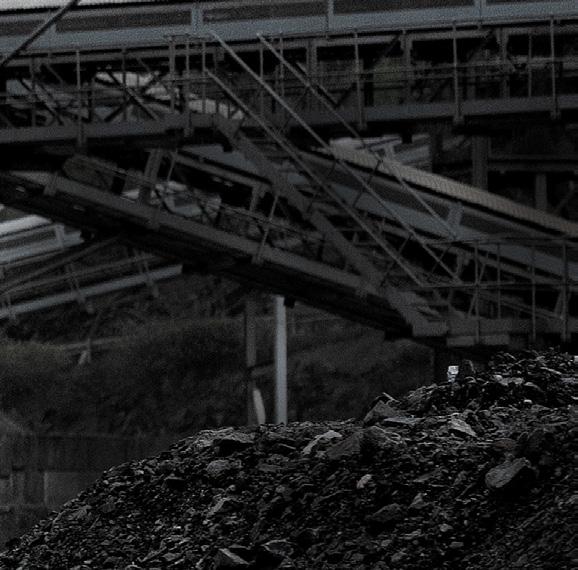
Words: Bob Beech


Photographs: Karl Hopkinson
Reproduced courtesy of Bulk & Tipper Magazine

Now being run by its fourth generation, Cornish tipper operator AR Haddy has been in business long enough to have experienced it all and to know just what it needs from its trucks and trailers, as Bob Beech finds out.
which links Devon and Cornwall at Saltash, near the company’s base.
Haddy’s new DAFs are the latest evolution of the fleet, with change driven by everything from customer demand to legislation and the changing shape of the truck manufacturing industry.
Four-wheel tippers evolved into sixwheelers, with Leyland displacing


Bedford, and ultimately paving the way for eight-wheelers as quarries encouraged hauliers to increase load sizes. Seddon Atkinsons later proved popular, thanks to good support from the local dealer. And this, in turn, led to Fodens, which shared the same reliable Cummins engines. The Alpha models, with rubber rear suspension, gave excellent service and are still remembered as great workhorses.
The end of Foden production meant that Haddy’s had to look for a new supplier, however, heralding a natural move to fellow PACCAR subsidiary DAF. Successive generations of DAF CFs have given good service and they dominate the fleet. Volvo three and four-axle rigids also play an important role in the operation, along with a few Iveco eightwheelers and a single Scania in the 27-strong fleet.


The introduction of other makes was partly due to declining support from the local DAF dealer. But a couple of years ago it became part of the Adams Morey operation, and this is now part of the Greenhous Group: one of the biggest DAF dealer group in the country. Richard says much has improved as a result.
An XF530 FAW 8x4 tridem is the latest arrival. With its sleeper cab, high specification driveline, well-equipped cab and a host of other extras, it really does stand out. But beneath the smart exterior there is a very capable vehicle that was purchased for sound economic reasons.
“We are a typical family transport business and we have to deal with all the same problems as everyone else,” says Richard. “But the good thing about having been in business for so long, is that very little ever happens that we haven’t had to deal with in the past. My father George has been involved since the 1950s and is still driving
every day and he has virtually seen it all, or at least heard about it from my grandfather’s time.
“I became full-time in 1999. Up until 1995, we were still running the family farm as well as the transport, but we were faced with needing to invest a lot of money in updates to the buildings and farm infrastructure. We couldn’t see a decent long-term return, so my father decided to concentrate on the transport operation.
“I’d been more interested in farming and tractors and spent some time working in Australia. I had my own tractor carrying out work in this area and didn’t really bother with the transport. But things change and I took my test and came back to help. Slowly, I took over more responsibility for the transport and eventually, Nicola and I took it on full-time.
“I felt that we needed to branch out a bit,” continues Richard. “We were very
“Weenjoyanexcellent relationshipwiththe servicedepartmentat AdamsMorey.”
reliant on the quarries and when they were busy we were fine, but if things were quiet we had little alternative but to wait for them to improve. So I started to pick up other work. It meant we had to have some steel bodies to handle muck-shifting and other tougher jobs, but it was a gradual process that took a while. It also enabled us to grow the business and expand the fleet.
“We tried quite a lot of different things, including running mixers, and crane trucks for bricks and blocks. Sometimes, these different jobs worked
for a while, but we have concentrated on tippers in recent years, because the formula works for us.
“We run a couple of artics pulling sliding-bogie Dennison tipping trailers for the quarries and other customers. It took a while to get some customers to accept artic tippers, but the sliding-bogie concept works so well, and they are more stable than an eight-wheeler on some jobs. We still get the odd site manager kicking up a fuss, but once they see them working, they soon come around.
“We tried a moving-floor trailer for a while,” he adds. “It was fine on one big job, but it’s complicated, with a lot of moving parts.
“The tractor units also work with stepframe lowloaders, shifting construction plant and resurfacing machinery in the main. We can run up to 30 trucks plus four trailers on the O-licence, but a few big jobs in this area have come to an end and there has been a bit less work about, and it’s better to have sufficient work than scratching about trying to keep extra vehicles busy.
“There’s quite a spread of work,” he continues. “We do quite a lot for the local quarries with contract vehicles in their livery, and some of the trucks in our own colours. And we also do quite a bit of muck-shifting.
“We transport a lot of lime for spreading on farmland in this area, too, finding fields in the middle of nowhere and reversing up ramps to tip into the spreaders. This type of work is not for every haulier or driver, but it is second nature for us.
“We move quite a bit of sea sand from the coast, too, which goes to equestrian centres and for farm animal bedding. Again, it’s outside the mainstream, but our local knowledge and experience helps no end. And we also do quite a lot of night work. There have been quite a lot of big surfacing jobs, both on new projects and resurfacing work. Given the state of many of the roads around here, this work will continue.
“Night-time work on road planing goes hand in hand with the resurfacing work, so we have a mix of insulated bodies for asphalt and steel bodies for planings and muck-shifting. I do some of the night work myself, though we have other drivers we can call on for it. It makes a fair difference to the bottom line if you have a decent run of night work plus the normal daily workload.
“Working with other hauliers you can trust is vital,” says Richard. “The main thing is that we all get paid. Trying to poach work is a sure-fire way to ensure we all lose out in the long term.







“It’s getting increasingly difficult to make money with a six-wheel rigid, and we have got a few 8x4 tridems. They give a considerable uplift in payload and will access almost any location a six-wheeler can, but you must put the right driver on them; generally, it’s best to move a six-wheeler driver up to an 8x4 tridem – once they have got used to the extra tail swing, it’s fine. But I have found that some drivers struggle with a tridem if they are used to a conventional eight-wheeler, as you need a completely different driving style. Apart from the tail swing, you need to allow for the front end trying to push straight on if it’s a wet, greasy surface. You must back off and let the truck change direction at its own pace. A lot of eight-wheeler drivers are used to the truck going wherever they point it on any surface, but these are different.”
Although DAF’s CF FAD 8x4 has been the fleet’s default truck, the first two New Generation XF models are now in
service. The high-specification XF530 8x4 FAW tridem tipper has been joined by an XF530 6x2 FTN rear-steer tag-axle tractor unit.
Richard always takes great care with the specification of any new truck and these two are no exception. He says he looks for long-term reliability and the ability to get the job done, and while fuel economy matters, relatively high engine power, an effective transmission, a decent engine brake or retarder and good enough handling to cope with the roads in the area matter most, given the nature of the terrain and the roads.
Driver comfort is also important, with a considerable number of extras inside and outside the cab included in the specification.
PPG Fabrications has supplied all the aluminium tipping bodies in recent years, while Charlton steel bodies are specified for the tougher work. Both
companies produce a quality product and support it well, says Richard, and both are prepared to tailor the specification to meet Haddy’s exact requirements.
“We look after the whole fleet in-house and have a great deal of experience of the DAF product. The parts service is very good with DAF. It will deliver a couple of times a day if needs be,” he states.
“Like any truck, they have their issues, but in the main nothing too serious in the long term. You get to recognise the weaknesses and can predict when things are about to fail and get it sorted before it lets go.
“We found the Euro V CF eight-wheeler an excellent truck. When we moved to DAF it was a natural progression for us, though we would have liked to be able to specify rubber rear suspension, as with Foden, because it gave very little trouble. We do have some issues with steel suspension, but as far as DAF is


“Werunboththe MX-11andMX-13 engines,…but weprefertheextra torqueofthe13-litre, asyouareeither goingupordowna hillaroundhere.”
concerned, no more than with any other make with a similar set-up.
“The first generation of the Euro VI DAF was quite a bit more complex, and proved to be more troublesome. And the wiring was less durable, which did try our patience a bit. Later versions are much better and give less trouble. Air compressors, water pumps and EGR valves are other common issues; they seem to last for a set period and so we change them at a certain time and mileage to be on the safe side.
“We enjoy an excellent relationship with the service department at Adams Morey. We deal with almost every job in-house, but use them for anything complex. They give us technical advice over the phone, and two of their long-serving technicians are quite brilliant: what they don’t know about a DAF isn’t worth knowing.
“The later versions with the TraXon gearbox drive far better than the earlier AS Tronic ones. It’s smoother and invariably picks the right gear in most situations. We have used automated transmissions for many years, and they have all improved no end. We had a couple of Foden Alphas with the AS Tronic gearbox, and we got on quite well with them, but you had to use manual mode quite a bit. Now it’s getting really difficult to find a driver for a truck with a manual gearbox. Automated gearboxes have really improved transmission reliability, clutch life has increased tremendously, and apart from the odd sensor we rarely touch a gearbox.
“We run both the MX-11 and MX-13 engines,” continues Richard. “The 450hp 11-litre is up to the job and is reliable, but we prefer the extra torque of the 13-litre, as you are either going

up or down a hill around here. The XDC FAD conventional 8x4 is probably the best all-round tipper from the New Generation range, but you are limited to the 11-litre engine under the lower cab; you have to go for the bigger XFC and heavier rear bogie if you want the 13-litre engine in a normal eightwheeler. This was part of the reason we went for the new XF530 FAW tridem. Also, we have had quite a lot of experience of tridems and rear-steer 6x2 rigids. They work well in this part of the world.
“This was the first production tridem chassis from the new range to go on the road in the UK, and it took a while for it to arrive,” says Richard. “It was displayed on the DAF stand at the Royal Cornwall Show as a chassis-cab in our colours and then sent to have the body fitted. Adrian Baker, our sales contact at Adams Morey, did a great
job with the specification. We took a long time to get it right and I’m very pleased with the result.
“It is driven by a long-serving driver and he is over the moon with it,” he adds. “It has a high specification but it’s still a working tool. We don’t need sleeper cabs as we only work relatively close to home, but it gives much more space in the cab and doesn’t add too much weight. We stuck with conventional mirrors, but included the front corner camera, which gives a great view to the front and nearside.
“It carries 19.5 tonnes with the insulated PPG body, including fuel and driver, which is pretty good for this chassis layout. The DAF FAW tridem is predominately a road-going chassis, and doesn’t have the ground clearance of the Volvo FMX 540 tridem I drive, but it copes if the driver
takes care off-road. The relatively short rear overhang with the tridem chassis can cause issues when tipping into a paving machine, but we use a detachable cover to protect the rear of the chassis.
“We also ordered a New Generation XF530 6x2 FTN tractor unit with the steering rear tag axle, which was an obvious choice after the good performance of the rear-steer rigids,” he states. “Manoeuvrability is an issue with any artic, and this makes a big difference with both the tipper and the lowloader.
“But the first job for the new tractor unit was to take our daughter, Rachel, to her school prom,” he laughs. “I did the same for her brother, William, last year with the tridem Volvo rigid when it was new. It’s become a bit of a family tradition!”



Words: Bob Tuck Photographs: Bob Tuck & DAF UK Reproduced courtesy of Commercial Motor
After 22 years of producing more than 238,900 examples of their do almost anything LF, DAF has quietly laid to rest one of ‘Leyland’s Finest,’ We take our cap off to this unsung hero.




In April 2007, DAF commenced building optional box and curtainside bodies for the LF (and CF) on the Leyland plant’s production line. A ‘first’ for the modern truck industry.
This early LF is still going strong although almost 20 years old. Chris Haynes points out the standard fitment of a large rear window in the LF cab enhanced the driver’s working environment.

In August 2023, DAF unveiled the latest XB range of rigids available at ratings between 7.5 and 19 tonnes gross, displacing the longrunning and best-selling LF range, with the last LF coming off the production line that November.
It now resides in Leyland’s British Commercial Vehicle Museum and apparently carries the signatures of all of the staff at the Leyland plant plus that of the local MP, Katherine Fletcher. The LF is special to Leyland because each and every one of them (yes, more than 238,900) went down the production line in the eponymous truck assembly plant before dispatch to all parts of the globe. No wonder all those involved with its conception and production are rightly proud to be associated with such a ‘Loyal Fetcher.’
The LF (the letters apparently stand for Light Forte) first saw light of day in January 2001. It was apt that it was unveiled at the Brussels International Show because it was very much built for the world market. It was voted the International Truck of the Year, which is quite an accolade for such a
small load carrier, and has since been exported to 52 different countries. The 1990s had been quite a rough time for all those involved with DAF, Leyland, and Leyland DAF, but by 1998 PACCAR had taken control, and things were on a firm setting when the then 24-year-old Chris Griffiths joined the LF design team based at Leyland. Chris was to climb to the top of the engineering tree at the Leyland plant but at the outset he recalls – very proudly - being one of the 100 or so involved in bringing the LF to life: “I think I started on the design of its gear linkage,” he says.
It should be stressed that the LF was totally different to the DAF 45 and 55 it replaced, as weight ratings right up to 18 tonnes gross were catered for by the new four-wheeler under the LF banner. On paper, the LF was available at six tonnes gross, but few of these were produced. In fact, Griffiths says, even the 7.5-tonner was dropping out of favour as the heavier 12-tonne versions were more in demand. He felt there was an accumulation of reasons prompting this trend that began when the nonHGV variants also had to be fitted with speed limiters.
Product Manager of the introduction, Chris Haynes, still enthuses about its arrival more than 23 years later. Haynes joined Leyland DAF at Thame in 1988 and had ridden the company’s ups and downs in various roles. He reckons the long stint he did in Sales Engineering helped to broaden his knowledge of what DAF customers were looking for. And in lots of respects, those same recipients were to get many of their demands answered when the LF arrived.
It’s a balancing act as to how much you can enhance a new vehicle’s specification before you price yourself out of a very competitive market, but the LF tested those boundaries. And to ensure salesmen didn’t forget how many attributes the new vehicle incorporated, Haynes came up with
“...theletters

In 2004 a Press Day was held on RAF Halton airfield and Chris Haynes is seen at the wheel of one of the vehicles on display. He enjoyed that but has stronger memories of his time at the wheel of a road sweeper LF.




Above left: Don’t you just love the head turning livery on this Del’s Nursery LF. Based at Sculthorpe near Fakenham in Norfolk, they apparently have connections in both New York and Paris. ‘Luvvly Jubbly’.
Above and left: Councils and Local Authorities use the LF for all manner of jobs. It’s seen in yellow as a gully sucker in East Lothian and collecting recycling in Flintshire.









Bottom left: We like the pleasing turnout of this Sprint Shift LF together with factory made body. Note that 10 years after its launch, the LF was still using badging incorporating links to the old 45 range.
the idea of printing 52 individual reasons to buy one onto a standard pack of playing cards. You could flip through the cards and read them individually or simply ask someone to pick a card – and then start talking about what it said.
Thus, if you picked the Queen of Spades you learnt it came with a choice of eight wheelbases making it ideal for all applications. While the Six of Hearts told you that fitting the LF with an exhaust brake extended brake life and saved fuel. The Nine of Hearts detailed how enhanced axle weights meant the 7.5-tonner actually came with a total axle tolerance of 8.4 tonnes giving peace of mind when partially loaded.
The new LF cab was designed as a joint venture with Renault Trucks and made by them in the French town of Blainville. It was available in both day and sleeper form.
When we suggest to Griffiths that it is really just half a sleeper he takes us to task: “You have to slide the seats forward before you can use the bunk but while I’m fairly tall, I slept out in one when we were testing it in the south of Spain. It was fine.”
DAF’s design team tried the truck themselves in hot and cold climates, on smooth and pavé road surfaces. Someone has to put a motor through its early paces! And the LF came shining through.
Normally a truck is built with a specific role in mind. A tractor unit can pull a variety of semi-trailers but traction is its game. Most eight-wheel rigids will probably be tippers or tankers, or perhaps a grab-crane. But when you ask what role the LF was built for, you’ll get a long list. It doesn’t have a niche, it has loads of them.
Middle left: County Durham based Stewart Ward has strongly favoured DAF for his varied operation simply because they are still built at Leyland in the UK. This 07 plate LF55.220 has been sold on (probably going for export) but Ward reckons the LF’s Cumminsmade engine is as good as it gets.
Middle right: Tuffnells Parcels was another big user of the LF. This long established concern closed down in ’23.
Bottom right: Many LFs might end their days converted for horsebox duties but this stunning example started its life in such a guise.
It has also won lots of friends since ’01 and we’ll let the words of Fleet News sum the model up after giving it an award at its 2024 event: “The LF is an excellent truck with a proven drivetrain. It is the default choice for many operators with a comfortable cab and great dealer network – it’s clearly best in class.”
It certainly is (or should that be was), for all sorts of reasons.
The brewery trade serves a diverse range of testing delivery points, with some dating back to the days of the horse and cart. They can, of course, make do with a traditional rigid but Tradeteam has always had a liking to the small artic. The FT LF55 mini tractor unit was built on the production line for up to 24-tonne gross operation. Also offered (but only made in smaller numbers) was a small-wheeled 21-tonnes gross six-wheel rigid – the FAN LF55.


The 100% electric version of the LF came in the twilight of its life, although back in 2010, DAF did try the market with a self-charging hybrid. The company’s first prototype was a 7.5-tonner but the launch of the LF hybrid was in a 12-tonne chassis. Its 4.5-litre engine drove through an Eaton Autoshift six-speed automatic ‘box. This incorporated a combined electric motor-generator linked to the vehicle’s traction batteries.
The market wasn’t ready for this concept and the option was shelved.
Kidds of Hornsea has been part of the Yorkshire based Duggleby Group since August 2022. Director of Removals & Storage there is James Brown who speaks for his trade when he says the great thing about the LF is its manoeuvrability in tight access spots: “In house removals you send trucks to places trucks are not really meant to go - tight housing estates or country houses in the middle of nowhere up winding tracks.”
This Kidd LF has a made-to-measure Sparshatt’s body which includes a two-man sleeper pod and incorporates three integral containers. This allows for forklift handling where contents have to go into storage. One grouse from Brown is with the wire to the sensor for the LF’s ABS warning light, pulling out due to the generous steering lock.
Right: Badged as a Kenworth, Britishbuilt LF is destined for North America.
Far right: The LF has proved to be very popular in the road sweeper market.



Right: Graham Bellman recalls excellent service from a huge number of LFs when he was Group Head of Transport at Travis Perkins. “We kept them for up to 10 years and based on whole life cost they were rated highly for reliability, performance, great driver acceptance, and suitability as an all-round distribution truck.”
Far right: Derbyshire County Council were to operate two mobile libraries which between them served 150 different communities.














Certas Energy has launched a new podcast focussed entirely on HVO.
HVO, or hydrotreated vegetable oil, is a widely available drop-in alternative to traditional diesel. It can slash greenhouse gas emissions from a vehicle by as much as 90% compared to standard diesel, and is fully compatible with the majority of diesel engines.
Certas Energy’s new podcast, HVO on the Road: Certas Energy in Conversation, features exclusive interviews with businesses who have made the switch from standard diesel to HVO, plus market leaders. It gives them an opportunity to talk about their experiences using HVO and answer some of the big questions surrounding it.
The first episode – which is available now on Spotify and YouTube - features Phil Moon from DAF Trucks UK, which has used a bulk supply of HVO from GBF, owned by Certas Energy, to fuel its press and demonstration fleet and its showtrekker outside exhibition unit.
Millie Jones, from Certas Energy and host of the podcast series, said: “HVO is a newer fuel to the industry which leads to many misconceptions. But fleet operators who dismiss HVO because of unfounded concerns miss out on the fastest, easiest way of lowering fleet emissions.
“The aim of this podcast is to sit down with people who have either completely or partially made the switch and hear from them directly about how they did it and how it has impacted them. We also look forward to speaking to market leaders who can answer the big questions.
“Since recording this first episode, we have converted our Alconbury Services HGV refuelling site to HVO, which demonstrates how quickly our network of HVO bunkers across the UK is growing. With availability increasing we have previously seen a decline in the cost premium and hope this trend continues.
“We hope that this ongoing podcast series, along with our increased availability, will encourage more people to start talking about HVO and make the switch to a more sustainable fuel.”
Talking on the podcast, he said: “When we first started talking about HVO six years ago, people couldn’t believe there was such a readily available alternative to diesel. The conversation has shifted now, people are aware of it, they’ve read about it in the press or know someone using it, but they haven’t dug deeply enough into the differences.




“Everyone looks at the cost premium, but as far as we’re concerned, there are countless benefits that go a long way to mitigate this.”
You can hear Millie and Phil discuss HVO in depth on their episode of the ‘HVO on the Road: Certas Energy in Conversation’ podcast which can be streamed for free on Spotify or watched on YouTube.






























































Commercial fleet Managers and truck drivers are often faced with an array of tyres to choose from for their vehicles, each prioritising different features. Goodyear’s latest truck tyres promise to support the fleets on their sustainability targets while saving money with every mile driven.
What are the biggest challenges facing trucks and their drivers when it comes to tyres?
Tyres are the only contact point between a vehicle and the road, so their role in a truck’s performance, efficiency and competitiveness should not be underestimated. Tyre manufacturers like Goodyear produce a range of products for different uses; trucks driving entirely on motorways put different demands on their tyres than last-mile delivery vehicles, to give a simple example. Today, fleet managers and drivers have another element to consider: sustainability.
The latest generation of tyres from Goodyear are designed with sustainability and efficiency in mind, but this doesn’t have to come at the expense of performance or competitiveness. Choosing the right tyres and maintaining them properly can help fleets and drivers save fuel and increase their range, reducing their impact on the environment and saving money on fuel bills.
How is Goodyear addressing these challenges?
At Goodyear, we have recently introduced our new EQMAX and EQMAX ULTRA range of tyres, which offer up to 20% better mileage and up to 6% improved rolling resistance compared to their predecessors1, helping fleets to reduce CO2 emissions while increasing traction and mileage on the road. They were designed to have a higher load capacity and lower rolling resistance compared to conventional tyres of the same size, and they carry Goodyear’s Electric Drive Ready label, meaning they are equally suitable for diesel, gas, electric and hydrogen trucks.

Richard Tawlks Manager Fleet Mobility, UK, Goodyear
The range is split into EQMAX, optimised for use on motorways and secondary roads, and EQMAX ULTRA, designed for long-haul driving. All tyres in the range, feature innovations to help improve durability and performance with a focus on grip and braking in all weather conditions.
What role can tyres play in the industry’s sustainability efforts?
To find out more about Goodyear EQMAX and EQMAX ULTRA, and how they can improve your vehicles’ efficiency and competitiveness, please visit:
There is a clear trend towards tyres becoming more sustainable throughout their entire lifecycle. Retreading and regrooving can extend the life of tyres by 150%2 and reduce the amount of crude oil used in manufacturing by 56%3. Recent developments have also allowed for more sustainable practices at the start of a tyre’s life, too. Goodyear is among the leaders with this trend; the new EQMAX and EQMAX ULTRA tyres are made of up to 55% sustainable material4, including ingredients like silica based on rice husk ash, a byproduct of rice processing that is often discarded to landfill. Developments in this field will continue at pace, reducing the impact tyres have on the environment before they even drive their first mile.
1) In comparison to predecessor, based on internal Goodyear data. 2) Based on internal analysis, comparing the use of a new Goodyear tyre versus a new Goodyear tyre that is regrooved, retreaded and regrooved a second time. 3) Based on internal data. 4) EQMAX range featuring up to 55% of sustainable materials. Goodyear defines sustainable material as a bio-based (defined as material of biological origin (Source: ISO 14021); renewable; or recycled (defined as material that has been reprocessed from recovered [reclaimed] material (Source: ISO 14021) material; or one produced using or contributing to other practices designed to promote resource conservation and/or emissions reductions, including ISCC PLUS mass-balance (defined as a certification verifying our capability to track the amount and sustainability characteristics of circular and/or bio-based material in the value chain and attribute it based on verifiable bookkeeping material. (Source:www.iscc-system.org/certification/chainof-custody/mass-balance/).





















Meet EQMAX and EQMAX ULTRA, Goodyear’s new tyre range that enables fleets to reduce CO2 emissions while increasing traction and mileage on the road**
• Highest percentage of sustainable materials ever seen in a Goodyear truck production tyre***
Scan the QR code and meet the new EQMAX range *
• Higher mileage and increased fuel efficiency
• Electric Drive Ready



Words: Jack Sunderland Photographs: DAF Trucks

Since unveiling its New Generation series in 2021, DAF Trucks has remained at the forefront of innovation in the commercial vehicle market.
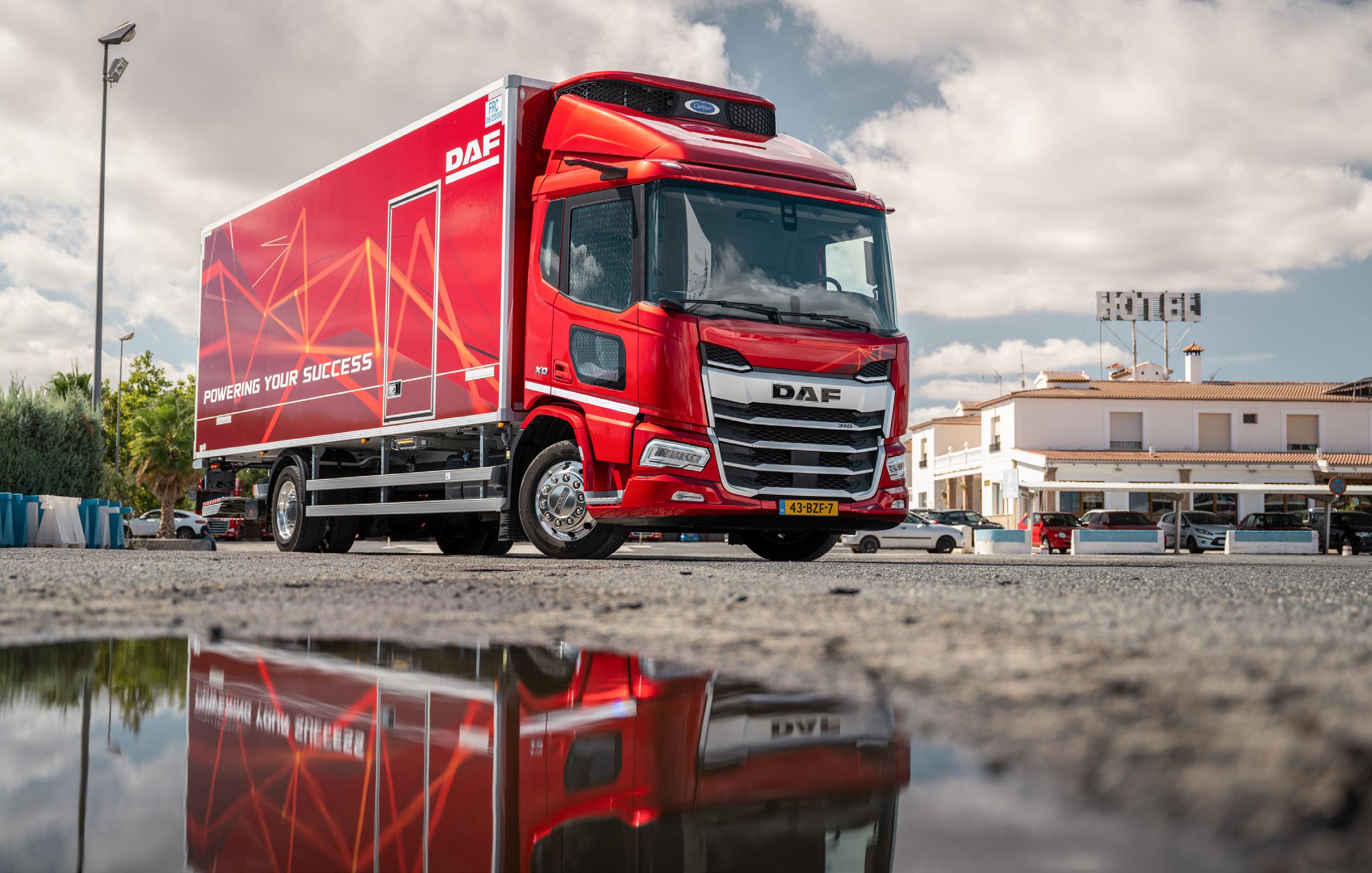

The launch of the XG, XG+ and XF models marked a significant milestone, as DAF became the first manufacturer to leverage relaxed Masses & Dimension regulations that enabled the design of longer cabs. These flagship models not only introduced unparalleled driver comfort and spacious interiors, but also quickly earned the trust of operators – as evidenced by their growing presence on UK roads.
The momentum continued with the release of the XD and XDC, followed by the introduction of the compact XB
range which completed DAF’s New Generation series. Despite this rapid expansion, the Dutch manufacturer shows no signs of slowing down. The latest round of updates to the lineup further enhances fuel efficiency, safety and driver comfort, reinforcing DAF’s commitment to continuous improvement.
DAF’s newest upgrades promise a 3% boost in fuel efficiency, building on the impressive 10% gain achieved with the New Generation launch back in 2021. These improvements are underpinned by advancements
to the PACCAR MX-11 and MX-13 engines, which between them offer power ratings from 370 and 530 bhp. A key upgrade is the adoption of Miller valve timing, which reduces compression force to enhance engine efficiency.
Further tweaks include a dualdrive coolant pump that operates electrically at low loads and switches to belt-driven power when higher cooling rates are required.
Additional refinements to the turbocharger and exhaust gas
recirculation (EGR) systems, as well as redesigned fuel injectors, further contribute to fuel efficiency. The injectors in particular are engineered to better withstand fuel contamination, increasing reliability in diverse operating conditions.
DAF has also introduced updates to its axle technology, starting with the SR1344 rear axle. This component now features a reinforced pinion design and is compatible with the 530 bhp MX-13 engine, meaning operators spec’ing this powerplant and axle combination can benefit from greater efficiency through down-speeding. Operators can now pair the axle with a 2.64:1 ratio, while 4x2 tractor units equipped with fuelefficient 315/70R22.5 tyres can achieve a 2.05:1 ratio – a set-up that reduces cruising rpm by 7% and improves fuel economy even more as a result.
Standard features across the line-up – such as DAF’s Digital Vision System (which replaces traditional mirrors with cameras), Predictive Cruise Control, and low-rolling-resistance tyres – collectively contribute to a 9% gain in overall fuel efficiency compared to vehicles without these features.
For rigid applications, the XD now offers a choice of a new 6.7-litre PACCAR PX-7 engine alongside the MX-11, while the XB range (7.5 to 19 tonnes) can be spec’d with PX-5 and PX-7 powertrain options. Construction-focused operators can opt for the new XBC model, which boasts a 19-tonne chassis, 255 mm of ground clearance, a 25-degree approach angle, and a reinforced lava-grey steel bumper for demanding off-road environments.




For high-volume trailer operations, DAF offers an FT Low Deck configuration for the XF, XG, and XG+ and these variants feature improved aerodynamics thanks to new sideskirts, two wheelbase options (3800 mm for XF and 4000 mm for XG/XG+), and a reduced fifth-wheel height of 91 cm, making them ideal for maximizing load space.
DAF’s commitment to safety is evident in the extensive suite of features integrated into its New Generation trucks. The low window belt lines, optional kerb-view window in the passenger door, and Corner View camera – which provides a 285-degree field of vision around the front and nearside of the vehicle –enhance visibility in busy urban and construction settings.
The latest updates introduce even more advanced radar and camera systems. Dual front cameras in the windscreen, short and long-range radars in the grille, dual side radars and a rear-facing camera enable comprehensive situational awareness for drivers. The latest safety systems include the Advanced Emergency Braking System (AEBS) which provides full autonomous braking to help avoid collisions with vulnerable road users in front of the truck; a new Drive-off Assist function to detect and warn drivers of people nearby or obstacles when at a stand-still or beginning to drive off; and the Event Data Recorder which records images and data when AEBS is activated; and a Side & Turn Assist which warns of pedestrians or other obstacles along the sides of the truck.
Speed Limit Recognition is also included, as is an Emergency Stop Signal that activates to alert other road-users when the truck decelerates quickly.
High Beam Assist, another new addition, automatically dips the main headlights to avoid dazzling oncoming drivers, while the Driver Drowsiness Detection system monitors things like steering, braking, and lane positioning to recommend breaks from driving when needed. DAF emphasises this system aims to support drivers, rather than be intrusive.
DAF is bundling a 10-year subscription to the PACCAR Connect fleet management platform with all its New Generation trucks. This offers fleet managers real-time data on


the overall fleet, plus information on individual vehicles and drivers to optimise operational efficiency. It also enables the new trucks to receive over-the-air updates and can work with other thirdparty telematics systems that may already be in place.
In addition, PACCAR Connect features Connected Truck Navigation which enables full route planning to be sent to the truck from the transport office, including last and first-mile routing options.
We tested several 2025 model New Generation DAFs on a variety of terrains in Malaga, Spain. The region’s mix of highways, urban roads, and steep gradients provided the perfect backdrop for assessing performance.
First up was the XB 210 FA 4x2 rigid, equipped with a 4.5-litre PX-5 engine delivering 208 bhp and 795 Nm of torque. Paired with an Extended Day Cab, this lightweight truck navigated hilly terrain and tight corners with surprising agility. The eight-speed ZF PowerLine automatic gearbox coped well with the steeper inclines and the overall driving experience is very car-like – good news indeed for the driver.



Next, we drove the XD 310 FA 4x2 rigid featuring the new 6.7-litre PX-7 engine. With 308 bhp and 1190 Nm of torque on tap, this truck demonstrated robust hill-climbing capability and smooth gear shifts thanks to its PowerLine eight-speed automatic transmission. The XD impressed with its refined ride quality and versatile performance, making it an excellent choice for regional and urban operations.
Finally, we tested the XG 480 FT Low Deck tractor unit powered by the 12.9-litre MX-13 engine. Delivering 483 bhp and 2500 Nm of torque, this model excelled on
highways, where its low cruising rpm and aerodynamic design made for a quiet, comfortable ride. The luxurious and spacious interior of the XG, complete with ergonomic seating and advanced infotainment, underscored DAF’s emphasis on driver comfort.
DAF’s latest updates to its New Generation line up represent a thoughtful evolution of an already successful range. By refining engine technology, enhancing axle efficiency, and introducing cutting-edge safety features, DAF continues to raise the bar in the commercial vehicle market.

“I’m really proud of our great beer,” says Logistics Manager, Mathew Heath, “but I’m just as proud of the logistics operation we’ve built to get our products delivered across our network. With over 250 pubs to serve, we need an agile, multi-purpose truck that’s equally at home on the High Street as it is on the open road. And, we need reliability, and that’s where our partnership with DAF comes in. DAF has

proven to be an indispensable asset to our operation.”
The path to DAF




The brewery’s fleet has certainly evolved over time. Mathew, who has worked at Robinsons for 27 years, has seen several changes in the brewery’s fleet profile. When he first joined the business, the brewery ran a fleet of Fords. Later, his predecessor switched to Volvo, which
served them for 15+ years. Mathew admits to a difficult experience when experimenting with another truck brand over a short period of time, which were beset with some reliability issues. The result was a return to the Volvo brand.
Six years ago, however, Robinsons found themselves at a crossroads. Volvo had hiked their prices significantly, and the brewery was on the look-out
Words: Ronnie Hitchens
Photographs: Karl Hopkinson
Reproduced courtesy of Commercial Motor
Robinsons Brewery is one of the UK’s oldest family-run breweries, and has been producing beer since 1838. Based in Stockport, the company has a strong local identity and is well known throughout the North West for its iconic Unicorn best bitter and its Trooper ale – marketed in collaboration with rock band Iron Maiden.






for alternatives that would offer both reliability and value for money. Cue a very timely phone call from the local DAF Dealer, Motus Commercials in Manchester.
“I got a call out of the blue from DAF,” recalls Mathew, “saying they were producing urban arctics within their LF range and would I be interested. It was exactly the right time because we

were looking to replace a vehicle. And the pricing, I have to say, was very competitive.”
DAF didn’t just offer a good price; it also delivered an impressive consultation process. Mathew was put in touch with the fleet manager at fellow brewers, Heineken, to get operational feedback on their involvement with DAF. Importantly, Mathew spoke directly to
Heineken’s drivers who had day-today experience with the DAF LF urban artic and who provided honest and open feedback. “I always believe you get the most trustworthy information direct from the drivers,” concedes Mathew, “They’re the ones out there using the vehicles every day. When they say a truck’s good or bad, you can be confident that they know what they’re talking about.”








Robinsons subsequently took the decision to purchase their first DAF LF, marking the beginning of a fruitful relationship with the market-leading Dutch marque. And DAF’s builtin-Britain credentials – with the trucks being assembled just up the road in Leyland – have certainly helped to oil the wheels. Indeed, 99% of all right-hand-drive DAF vehicles are assembled at Leyland Trucks, a fact that we’re surprised isn’t more widely known.
DAF XB urban artic: a game-changer for breweries With the arrival of three new DAF XB 260 ‘FT’ 4x2 urban artics, Robinsons has now completely replaced its Volvos. Like most deliveries to town-centre pubs, volume-based manoeuvrability is key, and the 21-tonne GCW XB units certainly deliver on that front. But why is the DAF seemingly such a good fit for the company?
“It’s like the DAF XB urban artic has been purpose built for us,” says Mathew, “They are brilliant around town and down tight rural lanes where many of our pubs are situated. Nimble, super-easy to manoeuvre, and the drivers are really, really impressed with the game-changing PowerLine transmission. Coupled with the 260bhp engine, the truck is just so sprightly and responsive.”
The DAF XB certainly does look tailor-made as an urban artic. Great visibility – the XB cab delivers a 3-Star Direct Vision Standard rating – is helped by a low belt-line and a huge windscreen, while a super-tight turning circle delivers impressive manoeuvrability. The cab is big inside too, making longer days out a pleasure and never a chore.
That eight-speed ZF auto transmission, however, is arguably the star of the show. The ‘urge-to-go’ facility means a sharp get-away from the lights and at roundabouts, and shifting is quick and silky-smooth. It’s a fact not lost on Robinsons drivers who have been unanimous in their praise. “They’ve all said it’s such a step-up from the LF,” Mathew says, “It instils confidence, especially around town where it’s so much easier, and safer, to keep up with the traffic flow.”
The 260bhp engine selected by Robinsons is one of four ratings available from the PACCAR PX-7 block. 230, 290, and 310bhp complete the incremental range. Robinsons’ trucks are plated at 21 tonnes GCW, so the 260bhp option provides ample power.
Beyond comfort and performance, the DAF XB also comes with an impressive suite of Advanced Driver-Assistance System safety features; drive-off assist, drowsiness detector, lane departure, and more besides, all fitted as standard. Cameras front and rear are invaluable when shunting in tight spots and, of course, providing critical evidence in case of an accident or delivery discrepancies.
Mathew has also spec’d the new XB tractors with airconditioning, which may seem like a regular feature nowadays, but for Robinsons’ drivers it was a much-needed upgrade for which they’d been asking for years! “I held out on spec’ing air-con for as long as I could,” admits Mathew, “but eventually we knew it was the right thing to do!”
Robinsons also relies heavily on its trailer supplier, Lawrence David. The Peterborough-based manufacturer has been working with Robinsons for over 20-years, supplying equipment specifically designed for the brewery trade. They may look like standard curtain-siders, but they’re built to handle the daily rigours of the beer delivery business.
“Throwing beer barrels around is a bit different than moving pallets,” Mathew explains, “The trailers have to be superrobust, and they’re built to last. We’ve had some trailers last as long as 18-years, but we do try to replace them every 10-years now.” Robinsons uses single-axle urban trailers, purpose-built to handle the rough treatment often unavoidable on pub deliveries. Mathew admits they’re an essential part of the mix.
A typical day for a Robinsons driver usually starts between 6.00 am and 7.30 am, depending on the delivery schedule. The brewery’s distribution area covers the North West of England into the Peak District and from Carlisle into North Wales. The driver is always paired with a mate, and they will have up to five drops on longer routes, while shorter, urban schedules could mean more than eight or nine locations. The trucks carry casks, kegs and smaller crates, with Mathew’s team setting two-hour delivery windows for each pub, so drivers know exactly when and where they need to be.
A long day can mean up to 12 hours if traffic is heavy or if longer-distance deliveries to rural areas in North Wales or Cumbria slow things down, but, typically, drivers are finished by 2.00 or 3.00 pm. Deliveries are fulfilled five days a week, Monday to Friday.
The network
Robinsons Brewery owns around 250 pubs, of which 29 are ‘managed houses’, meaning all staff are directly employed by Robinsons. The remaining pubs are tenanted, or run by ‘Pub Partners’, as the brewery refers to them, and relying on a close relationship between the brewery and independent pub landlords.
Although it was 186 years ago when William Robinson bought the Unicorn Inn in Stockport, it wasn’t until 50 years later, in 1878, when expansion began in earnest with the acquisition of 12 pubs. Frederic Robinson Ltd. (under the name of William’s younger son) was established at the turn of the 20th century with successive family members takingup the reins ever since. Today, Robinsons is a major player in the brewery business, with its pubs, inns and hotels right spread right across the North West and North Wales.
Robinsons is currently undergoing a major transformation as the company prepares to move its brewing operations from its spiritual home in Stockport town centre to a new, stateof-the-art brewhouse facility in Bredbury a couple of miles down the road. The new location is, naturally, designed with sustainability very much front of mind, reflecting Robinsons’ commitment to the environment as they look to the future.





Sustainability, as mentioned, is a key focus for Robinsons as the company plans for the future. In addition to the environmentally friendly new brewhouse in Bredbury, the company has made strides in reducing its carbon footprint across all areas of the business. From energy-efficient brewing to recyclable packaging and eco-friendly delivery practices, Robinsons is properly committed to making beer that’s responsibly produced, having joined the Zero Carbon Forum with the commitment to hitting net-zero emissions by 2040. It is also part of the Greener Retailing Guide, a collaboration with Manchester Metropolitan University.
This focus on sustainability extends to the brewery’s logistics operation as well. Although its DAF fleet remains diesel-powered presently, the company also has plans to explore alternative fuel vehicles in the future, including electric or hybrid trucks, as these technologies continue to evolve.







Representing a significant £8 million investment, it marks the largest project Robinsons has undertaken in recent memory and, not unsurprisingly, is being driven by the need for modernisation and efficiency. Although smaller in size than the current brewery, Bredbury will be far more advanced, using cutting-edge brewing technology to produce the same volume of beer in a more sustainable and cost-effective manner.
“This is probably the biggest project Robinsons has embarked upon for 30 or 40 years,” Mathew says. “Moving from our original site, where we’ve been brewing since 1838, to a new location, albeit nearby, is a brave and massive step for the company.”
The central Stockport site will remain home to Robinsons’ head office, as well as some other business functions. However, with the brewing process moving out of town, that evocative aroma of hops and malt will waft through the streets of Stockport no more. It really will mark the end of an era.
A family business with global reach Despite a long history steeped in tradition, Robinsons is a company embracing modern technology and very much looking forward, as demonstrated by the move to Bredbury. The brewery remains family-run – now under the sixth generation of Robinsons family leadership. Oliver Robinson oversees the brewery operations today, while his
cousin, William, manages the pub estate and other business functions.
Robinsons’ beers are as popular as ever, both in the UK and internationally. The brewery’s collaboration with heavy-metal band Iron Maiden on its Trooper beer, has taken the Robinsons brand worldwide, with the ale exported to over 45 countries globally.
The road ahead
As Robinsons look to the future, its partnership with DAF Trucks, Lawrence David, and Motus Commercials has proven to be a strong and effective alliance. The combination of reliable vehicles, wellengineered and robust trailers, and a trusted maintenance provider has allowed the brewery to maintain a delivery strategy that is proven, efficient, and fully capable of supporting its growing operations.
With the addition of a new brewhouse, sustainability emerging a core focus, and an expanding portfolio of beers, Robinsons is primed for continued growth. Its fleet of DAF urban artics will continue to be a crucial asset in ensuring that products are moved seamlessly from its brewing facilities to pubs across the UK and beyond. The agility and reliability of these vehicles are key to meeting the increasing demands of customers while minimising environmental impact.

preparing to move its brewing operations from its


Beers that really rock Robinsons’ collaboration with the legendary British rock band Iron Maiden is one of the most successful partnerships in the beer industry. In 2013, Robinsons teamed up with the heavy-metal band to create Trooper, a premium British ale named after the band’s famous, eponymous track. The beer was developed in consultation with Iron Maiden’s frontman, Bruce Dickinson, well-known for his passion for beer as well as music. Together, they crafted a distinctive ale that combines Robinsons’ brewing expertise with Dickinson’s vision of the perfect pint.
Like the Iron Maiden track, Trooper, the beer, has become a huge global hit, appealing to both beer enthusiasts and Iron Maiden fans alike. With its malty base, subtle hop character, and 4.7% ABV, Trooper has become a classic British ale winning numerous awards and expanding Robinsons’ presence worldwide.
In addition to the original Trooper, the partnership has produced several limited-edition and seasonal beers, such as Trooper 666, Sun and Steel (a hybrid lager and sake brew), and a stout called Fear of the Dark. This year they also launched a new core beer, Trooper Pale, a 3.4% pale ale. Each new limited-edition release is inspired by Iron Maiden’s music, with label-art and branding reflecting the band’s iconic imagery. The collaboration has clearly worked, and has been successful in taking the Robinsons brand to a global audience. In addition to Trooper, Robinsons continues to brew its popular Unicorn best bitter and a range of other ales and lagers, including ‘Unicorn Brewing’, a new craft range inspired by the ‘Beer Crew’, a group of people across Robinsons pubs interested in inspiring new beers, keeping both traditionalists and more adventurous beer drinkers happy. This year Robinsons is also celebrating 125 years of non-stop production of their iconic 8.5% craft beer, Old Tom.


As trucks have developed, so have the ways that they breakdown and the skills required to fix them.
With smartphones unheard of, telematics systems in their infancy, and no such thing as what3words, the world was a very different place in 1997. That was when Andy Mudie, now DAFaid’s UK Manager, began working at the sharp end of the long-established truck roadside assistance operation as a technician responding to emergency call-outs.
“Calls would come in from phone booths, you’d be given a rough idea of where the truck was, and that was it,” he recalls.
Quite often however he would be able to track the vehicle down by following the debris the incident had left on the highway!
“You’d see bits of engine and pools of oil,” he says. “Perhaps there’d be an alternator belt that had flown off.”
When he got to the truck he might find, for example, that a throttle linkage had broken. In those pre-Euro-III days there was little in the way of sophisticated electronics, so depending on the fault a technician could usually lash something together to get the vehicle rolling again.
“That might involve using your bootlaces,” he laughs.
Nowadays major mechanical calamities are a rarity, but drivers can nevertheless
As trucks have developed, so have the ways that they breakdown and the skills required to fix them.

still require speedy assistance. “A flat battery is one of the biggest reasons for a call-out and it’s not unknown for drivers to manage to lock their keys in the cab,” Andy says.
Another key reason is a yellow warning light appearing on the dashboard, prompting the driver to bring the vehicle to an immediate stop.
While that is an appropriate reaction if a red light appears, a yellow one means
that a fault has arisen, but the truck can still be driven to the nearest DAF dealer workshop without any damage being done. Once there the fault, which could be connected with the emission control system, can be investigated in a safe environment, says Andy.
A red light rarely illuminates he says, but if it does, then the truck should stay where it is until help arrives. “It could mean for example that the engine is losing its coolant, or the oil pressure has
Words: Steve Banner
Photographs: DAF Trucks
Many thanks to Heather Currie of DAF dealership
Brian Currie for her help with this article.
suddenly fallen sharply,” he warns.
At this time of year a technician may be needed to free air-brake valves that have iced up in cold weather, he says. “That can arise because the air-dryer cartridge should have been changed, but wasn’t,” he remarks.
Bitter weather can also result in wiper blades freezing to the windscreen and a fuse blowing when the driver tries to use the wipers without realising what
has happened. So why doesn’t the driver simply defrost the screen, change the fuse, and get the wipers going?
Because of another trend that makes today’s world very different from the way things were more than a quarter of a century ago.
Back then drivers would regularly sort problems out themselves, and would only request assistance if they, and their mates who would probably stop to help them, were stumped. Modern attitudes towards health and safety however mean that drivers are often expressly forbidden by employers to do anything to a truck –including changing a fuse – other than drive it.
Many of the call-outs DAFaid responds to result in technicians going to safe and well-lit distribution centres rather than dark and lonely roadsides and they may not always be handling emergencies. “If a truck operated by a major fleet is there with a broken mirror
or light, then somebody will ring the fleet’s maintenance call centre and the problem will be passed to DAFaid,” Andy observes.
Once the rescue service is alerted, the driver has to wait for help, and generally they will not have to wait too long. “Sixty minutes is the average response time from when the initial call is made to the DAFaid control centre to the technician turning up,” he says.
Safety dominates all other concerns once help arrives, says Andy. “If the technician feels that the truck needs to be recovered because it is in too dangerous a position – on a blind bend, for instance – to be worked on safely, then that is not something that will be queried by our control centre,” he states.
Eighty-one per cent of jobs are completed at the roadside, however, without a recovery rig having to be summoned to haul the truck to a DAF dealership to be repaired.
DAFaid can respond to glitches with ancillary equipment, says Operations Manager, Sharon Simmonds, who has been with DAF for almost 30 years. A stuck tail-lift can immobilise a truck, while a refrigeration system that is playing up can result in a valuable load defrosting and being rejected at the point of delivery.
“So we can assign a tail-lift or fridge company as appropriate to deal with the problem, and we make sure we follow it through,” she says. Tyre fitters can be assigned in the same way if a truck is stranded with a puncture.
And the most challenging DAFaid breakdown call she’s had to deal with?
“It was from a driver who was transporting a sedated rhinoceros to a zoo,” she replies. “He was desperate for us to get out to him as quickly as possible, because he was worried the rhino would wake up!”


The DAFaid van needs to be fully equipped for any eventuality

Technicians from DAF dealers are responsible for delivering DAFaid, and both they and the network are proud of the work they do. “It’s a brilliant tool and of huge benefit to our customers,” says Mark Price, Service Manager at DAF dealership Motus Avonmouth.
Those customers can be running vehicles which, although they might not be trucks, have DAF engines in them.
“We once had to go out to a DAFengined bus which was on a ship in the docks at Avonmouth,” he recalls. It was due to be offloaded but it couldn’t be started because the fire suppression system had gone off and the engine compartment was full of foam.
Then there was the time a DAFpowered crane needed attention. “The trouble was that it was in the middle of a field, and it was supposed to be putting up a wind turbine, but the engine wouldn’t start,” he says. On one occasion a technician had to be called out to a broken-down coach transporting reggae and pop band UB40.
“Our technicians have attended breakdowns in Longleat Safari Park, and they have to go to breakdowns involving vehicles at the Glastonbury Festival every year,” says Mark.
“You can sometimes see their beacons flashing behind the Pyramid Stage.”
They are seldom defeated. “We were once faced with a truck that was stranded in a huge pool of water in a farmyard, so the technician managed to find a rubber dinghy, and paddled out to it to fix it,” he says.
DAF operators are clearly deeply impressed by the service DAFaid delivers.
“Over the years it’s been vital in helping us with its roadside assistance and support,” says Howard Marriott, Group Transport Manager at Barton Petroleum. “We’re pleased with the roadside job completion rate, and even in the event of a recovery, the waiting times have never been a problem.
“This helps us immeasurably when we’re thinking about rescheduling work,
and means we can keep our customers updated with accurate revised delivery times,” he continues. “This is essential to our business, especially when it comes to delivering home heating oil, which very often requires the customer to be at home.
“All transport operations need a reliable roadside support programme and DAFaid certainly delivers that.”
Darren Spurrier, Transport Operations Manager at egg producer and packer, Bird Bros, praises DAFaid for the prompt response it delivers if a problem arises, and for making sure he knows how long it is likely to take before a technician gets to a truck that needs attention.
“It will keep the job open until I’m satisfied that I’m happy with the service that has been provided, and will send me an SMS text message to say the job is closed,” he reports. “I have worked with other manufacturers before, and can easily say that DAFaid gives me that ‘wow’ factor.
“It’s highly recommended, and gets five stars from me.”

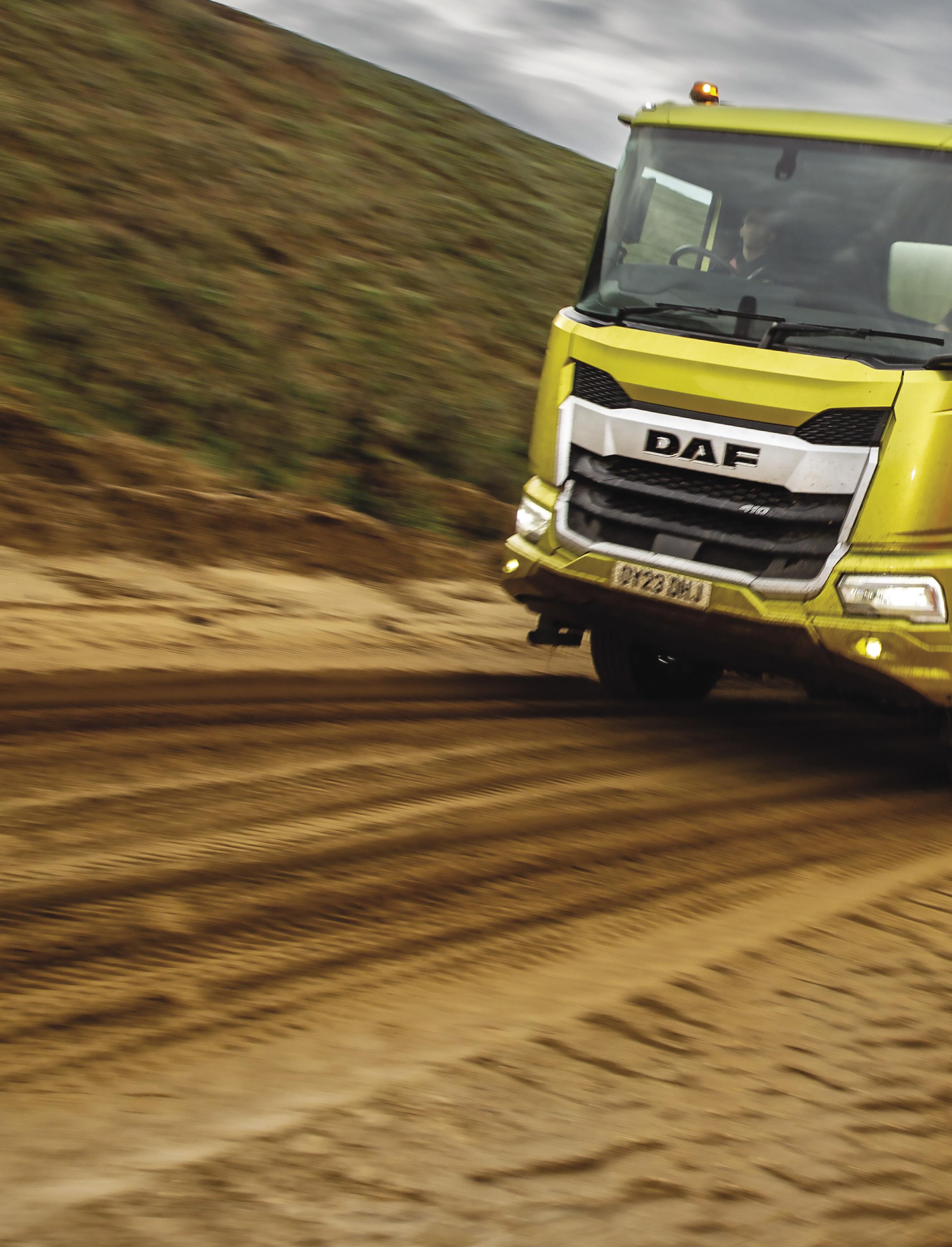



Costica Moscal triumphs at DAF UK & Ireland Driver Challenge ‘24

After a tough weekend of challenges held at DAF dealer Chassis Cab Cambridge and on roads and in a quarry nearby, Costica Moscal has emerged as winner of the 2024 DAF UK & Ireland Driver Challenge.
The final event consisted of a series of tough theory, practical tests and driving challenges. Costica, a driver and driver-trainer at Oxalis Logistics, fought off strong competition from 20 other highly skilled driving professionals over the weekend event held at the end of October.
Now in its fourth year, the DAF Driver Challenge is the culmination of a search across the UK and Ireland to find the very best commercial vehicle driver. Following an

initial online registration process, including assessments, on-road awareness and demonstrating a thorough understanding of the CV industry more widely, over 150 selected drivers were invited to one of 11 regional heats held at DAF dealerships around the UK and Ireland, with just 21 drivers going forward the final event at Chassis Cab Cambridge.










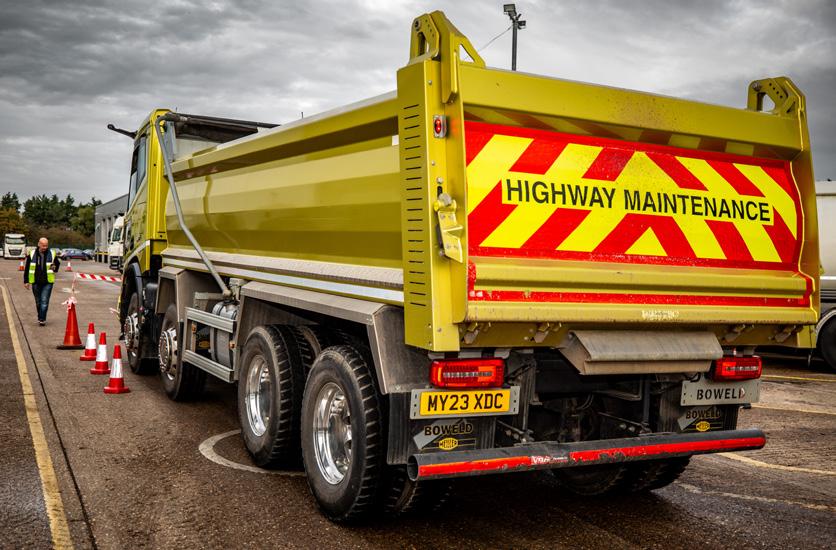












To ensure a level playing field, and that the final contenders were a true reflection of the nations’ very best drivers, the DAF Driver Challenge was again open to drivers of any vehicle marque.
Costica, as well as being crowned the overall winner, also won three tests outright and was a top five competitor in seven of eight challenges, ably demonstrating his all-round
knowledge and skill behind the wheel. Challenges included a ‘commentary drive’ of a New Generation DAF XG, manoeuvring tests with rigid and articulated vehicles, a theory examination, city driving in a DAF XB, plus two exciting off-road quarry driving tests in DAF XF FAW ‘tridem’ and XDC FAD 8x4 tippers.
To keep the contenders, including some previous finalists from earlier



years, on their toes, the tests and challenges they faced were revised, updated and in some cases changed completely for this year’s final.
There was also a special ‘Champion’s Challenge’ a tricky precision manoeuvring test devised by 2022 DAF Driver Challenge Champion, Colin Court, who was in attendance throughout the weekend to help adjudicate.
Runners-up were, in second position, Thomas Mills who is also from Oxalis Logistics. and in third place, Adrian Pritchard.
The event was overseen by a team of judges comprising some of DAF’s Dealer Driver Trainers and Transport Specialist Dave Cooper, all led by DAF’s Press and Demonstration Driver Mandy Wannerton, who was full of praise for the contenders. “We were extremely impressed with the standard of entrants this year. All of the final 21 competitors can consider themselves as an elite-level driver, but Costica was just outstanding. Congratulations to him and to everyone who took part. It was nail-biting at times, which really added to the drama.”
Costica will go on to represent the UK and Ireland at the International DAF Driver Challenge event, set to take place in 2025.





and consideration; qualities that Ian
DAF now has Dealer Driver Trainers based across the country to help hand over new and used vehicles and we thought it would be good to get to know some of them a little bit better! In this edition we talk to Tom Slater, one of the DAF Dealer Driver Trainers at Harris DAF in Grays, Essex.
Q: When did you first join Harris DAF and what was your first job there?
A: I joined the Harris DAF Group in January 2020. My first job was as a driver and shunter.
Q: What did you want to be when you were at school?
A: I always wanted to be a driver and it didn’t really matter what kind of driver. I left school at 15 and my very first driving job was St Cuthbert’s Co-operative Society doing milk deliveries with a horse and cart in Edinburgh! I gradually progressed to driving buses for Eastern Scottish.
Q: When did you get your HGV licence?
A: I passed my HGV C+E test and got my licence in 2007.
Q: What do enjoy most about your role?
A: The variety. Every day is different. It is great to meet new people whether doing a handover or talking to our customers whilst playing an active role in my day-to-day work.
Q: Do you have a top tip for a driver getting their new DAF?
A: I would say, take full advantage of the driver safety and comfort features, spending some time on your own to get to know the vehicle your way.
Q: What car do you currently drive and if money was no object what would you have?
A: I currently drive a Volkswagen Passat, but my dream car would be a Ferrari 250 GTO.
Q: What other responsibilities do you have within your role at Harris DAF?
A: My responsibilities are site health and safety, managing the drivers and shunters, and forklift instructor trainer for the Harris Group.
Q: If you were not doing this, what would your ideal job be?
A: A role in Mountain Rescue always appealed to me.



Tom enjoys cycling, running, and walking outdoors, activities that play a vital role in staying positive. This positivity has been crucial as Tom was diagnosed with bowel cancer in 2018, which turned upside his world upside down. However, attitude is everything and he chose to approach his diagnosis with a positive mindset, focusing on what he could control. Thanks to his determination and support from friends and family Tom battled and beat the bowel cancer and says he has emerged stronger and more grateful for life. Tom is very proud of his two daughters for their hard work in achieving their goals. The elder, Holly, is a teacher, and Sadie, the younger, is in her final months of training as a hospital Operating Department Practitioner (ODP) assisting surgical teams in operations.



By Richard Simpson, industry pundit
Living as I do in the heart of farming countryside, I am only too aware of the controversy surrounding the Government’s move to bring farming enterprises into the scope of inheritance tax, and the furious response that it has provoked.
My own personal take on it is that it will impact on many more farms than the Government suggests, but will probably have less of an impact on them than the farming lobby portrays.
But I can only stand back and wonder at the amount of column inches and video footage that the proposals have provoked. A massive, polite, and wellorganised demonstration in London, and the veiled threat of a more robust response to come if the farming lobby isn’t listened to have clearly attracted mostly sympathetic media coverage and some heated public debate has followed with the farmers winning most of it.
More broadly speaking, what can the haulage industry learn from it?
One point is to speak with a united voice. The farmers mostly do this very well, with the National Farmers’ Union taking the lead. It’s unfortunate that the same can’t always be said for the haulage industry where we have Logistics UK speaking for transport users and own-account fleets, and the Road Haulage Association for third-party hauliers. I was going to include within that the trade unions speaking out for truck drivers, but I see little evidence these days that they do.
In an ideal world it would be great if the trade bodies could always put forward a clear and united position, although when one organisation is for transport users and the other for transport providers then that clearly isn’t going to happen.
But both sides do face a single challenge, which is Net Zero. Decarbonisation of road transport is just one part of that: but it will have an impact on UK transport that is far greater than the impact that UK transport has on the world’s climate.
We are already seeing that impact with the closure of the Stellantis van factory in Luton: our Government’s stated ambition to be a world leader in climate protection has not been backed with any kind of realistic support for decarbonised road freight transport. Instead, we have had £66 billion spent on a deeply flawed project to build yet another railway line between London and Birmingham, which has consumed god knows how much valuable land (farm, residential, conservation, and industrial) and inflicted a lot of environmental damage into the bargain.
In my opinion, the road transport bodies should be raising merry hell on this, pointing out to the public how the money could have been spent for far greater economic and environmental benefit on, for example, installing truck-specific chargers on the strategic road network, or encouraging the use of renewable and low-carbon fuels in current heavy trucks.
As transport professionals, we all know and understand that electric trucks are currently incapable of fulfilling every transport mission. But the major constraint is no longer the vehicles themselves, it is the infrastructure: and that brings us to my favourite acronym: RIPP; Range, Infrastructure, Price, and Payload. These are interdependent factors which between them determine the economic practicality of batterypowered trucks.
Price is determined by the range of the vehicle, because its price is set by its battery cost, and so too is payload, because the bigger and heavier the batteries, the less the truck can carry. So small batteries mean a truck that costs less and can carry more. But making this possible means investing in infrastructure to allow frequent charging opportunities, most importantly in sensibly located and accessible charging stations.
Truck operators and manufacturers can do much of this themselves. DAF has been a leader in providing chargers as well as vehicles in an accessible package for operators wanting to start a transition to electric trucks, and some other manufacturers are following. To a certain extent these early adopters can help one another out by opening their chargers to third-party users too.
But the real sticking point is off-depot charging on trunk routes. Suitable land for charging stations adjacent to motorway junctions is also highly sought-after for warehousing and residential development, and the high prices it will command make the business case for turning it over for use as an electric truck stop difficult to justify. Just how much would a charging-station owner have to charge for a top-up to make this kind of business financially viable?
Whisper it, but one good thing about the Government’s proposals to charge inheritance tax on farms might be to reduce the price of land and to encourage farmers to sell off suitable sites for truck charging stations.
Just don’t tell any of my neighbours that I said this, OK?



Your chance to win fantastic prizes every issue



The prize in this edition is a DAF XG FT 4x2 tractor and tri-axle trailer miniature in 1:50 scale, for one lucky winner. Simply spot and mark the four differences on the images above. Once completed, either cut out or photocopy and post to DAF Driver magazine, 4th Floor, 19 Capesthorne Drive, Eaves Green, Chorley, Lancashire, PR7 3QQ Closing date: Friday 7th February 2025
Terms & Conditions: The winner will be notified within 30 days of the closing date either by letter,telephone or email. All entrants will be placed in a hat and selected at random by a third party. No money alternative will be offered. The winner’s name and county will be displayed in the next issue of DAF Driver magazine.
Winner from last issue: David Sheridan, Co Kildare. Winner’s details to appear in issue 37 of DAF Driver magazine























































Ensure your commercial vehicle workshop runs safely and e ciently throughout the winter period with our seasonal range of Workshop consumables from TRP.

High visibility and warm clothing, together with a full range of torches and work lamps, consumables and winter vehicle care products help technicians maintain your fleet through the dark winter months.













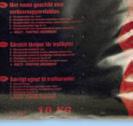
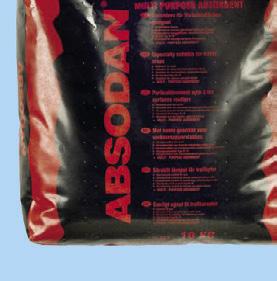




As












































winter approaches, check your vehicle batteries are in good condition and ready for cold starts!
DAF Dealers carry a full range of batteries for all truck and LCV applications, including DAF Genuine, Varta and TRP batteries including Promotive, Endurance and Heavy Duty choices. Call your dealer for competitive prices.









































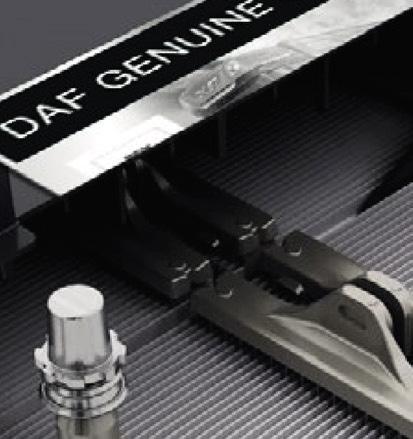




























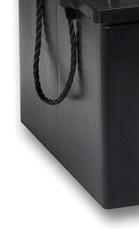









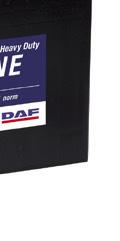







The new factory assembled complete DAF hub kit is the perfect choice for your DAF truck.
Manufactured to the exact same specification with OE precision parts as originally fitted, and with quick & easy ‘out of the box’ installation, it ensures maximum vehicle uptime and service life.





To claim your GREGGS eGift Card when you purchase a complete DAF Hub, your parts contact will require your name, email address and business name.
Once your purchase is processed along with invoice details, we’ll send you an email with a code to claim your eGift to use at participating GREGGS shops, for a tasty treat across the entire GREGGS range of food & drinks!




















































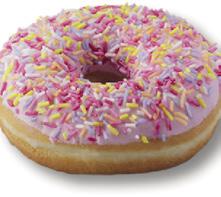





















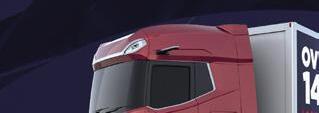








































Discover the Solar Guard style for your New Generation DAF!
Styling a New Generation DAF truck has never been easier with these five accessories in our initial selection: sun visor, bumper spoiler, cornershield, fender widener and LED Lightbox. Solar Guard, the market-leading supplier, tests its products in all weather and road conditions from Norway to Spain, putting safety first.
+ Lightweight accessories that give your truck a cosmetic boost
+ Specially designed for the New Generation DAF truck
+ Made from high-quality polyester and easy to install
OUR SOLAR GUARD ACCESSORIES, YOUR NEW GENERATION DAF
All accessories are available from your DAF Dealer and the DAF Webshop.




























The all new Black Work Lamp range is available in 6 different variations including round and square. With up to 20 LEDs, up to 6325 lumens and featuring single-bolt mounting. Nothing is left in the dark from this new Durite lamp line-up.









































WOMENS – smart casual range including hoodies and Softshell jackets

KIDS – toys, hats and backpack
LIFESTYLE – over 50 items including caps, mugs, stationery, luggage & watches
MINIATURES –models including tractor units and rigids, 1:50 and 1:87 scale featuring a variety of trailers







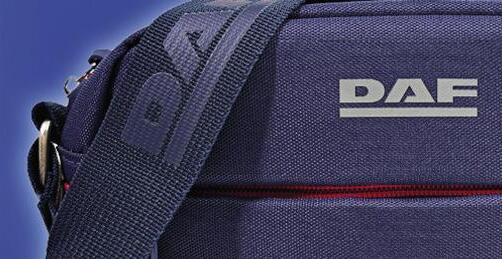






























































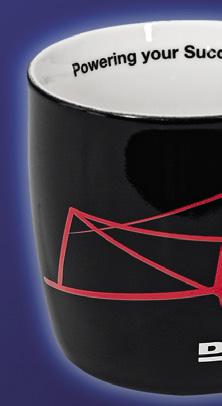





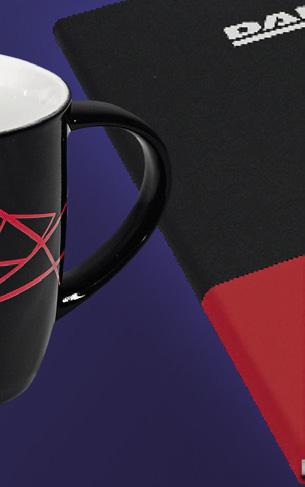































































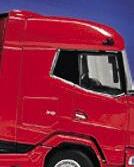






























The quality of a truck depends on the quality of the organisation behind it, which is why the DAF dealer network offers a unique advantage with the best geographical coverage of the UK, the most heavy truck experience and the longest opening hours of any truck franchise.
Area Dealer name Postcode Telephone
ABERDEEN Norscot Truck & Van Ltd ★▲ EV AB23 8JZ 01224 824444
ASHFORD Channel Commercials PLC ★▲ EV TN23 1EH 01233 629272
AVONMOUTH MOTUS Commercials ▲◆ EV BS11 0YL 01173 042800
CARDIFF Watts Truck & Van Cardiff ★ EV CF11 8AT 02920 308595 CARLISLE MOTUS Commercials ★ EV CA3 0HD 01228 539394
CROYDON HTC Croydon ★ CR0 4TD 0208 683 6200 DERBY MOTUS Commercials ▲ EV DE22 4NB 01332 824371 EDINBURGH Lothian DAF ★▲ EV EH20 9QH 0131 440 4100 GLASGOW MOTUS Commercials EV G51 4TH 0141 425 1530
GLOUCESTER MOTUS Commercials ▲ EV GL2 5FD 01452 508700
GRAYS Harris DAF ★▲◆ EV RM20 4AU 01708 864426 GUILDFORD HTC Guildford EV GU1 1RR 01483 594900
MOTUS Commercials ★▲ EV B63 2RL 01384 424500 HEATHROW HTC Heathrow ▲ EV SL3 0ED 01753 681818
HUDDERSFIELD MOTUS Commercials ▲ HD2 1UR 01484 300500
HULL MOTUS Commercials ▲ EV HU9 5PJ 01482 795111
IPSWICH Chassis-Cab Ltd ★ EV IP6 0RL 01473 833003
LEEDS Ford & Slater DAF ▲◆ EV LS28 6SD 01132 571701 LEICESTER Ford & Slater DAF ★ EV LE3 2JG 01162 632900 LIVERPOOL North West Trucks ▲ EV L36 6AJ 0151
BT36 4PT 02890 342001
Lancashire DAF ★▲ EV PR5 8BW 01772 338111 READING HTC Reading ★ EV RG7 4AG 01189 300900 SHEFFIELD Ford & Slater DAF ▲ EV S13 9NR 0114 293 9200 SHREWSBURY Greenhous DAF ▲
ST6 2DE 01782 276600
5YT
MOTUS Commercials ▲ EV S71 3HS 01226 731870 BASINGSTOKE Adams Morey Ltd RG24 8FB 01256 811414 BATHGATE Lothian DAF EV EH48 2EY 01506 813 743 BEDFORD Brian Currie (Milton Keynes) Ltd MK41 9TG 01234 211241 BELLSHILL
Commercials B33 0SL 0121 784 4023
BIRTLEY Ford & Slater DAF DH3 2SP 0191 406 8888
BLACKWELL H W Martin (Plant) Ltd DE55 5JY 01773 813313
BOURNEMOUTH Adams Morey Ltd ★ BH8 0BL 01202 524422
BRIDGWATER Adams Morey Ltd TA6 5LB 01278 550 970
BURTON ON TRENT MOTUS Commercials ◗ DE13 7AB 01283 248899
BURY ST EDMUNDS Chassis-Cab Ltd EV IP32 6NL 01284 768570
CAMBORNE Adams Morey ◗ TR14 0PY 01209 721989
CAMBRIDGE Chassis-Cab Ltd ▲ PE28 9QR 0333 323 4040
CANTERBURY Channel Commercials PLC CT3 3DW 01304 841111
CARNFORTH Lakeland Trucks Ltd LA5 9DW 01524 734544
CASTLEFORD Pelican DAF ▲◆ WF10 5UB 01924 227722
CHESTERFIELD Ford & Slater DAF ▲ S40 2RG 01246 234213
CONWY Parrys Commercials Ltd LL28 5RA 01492 580303
CORBY Ford & Slater DAF ▲ NN17 4BA 01536 207980
COVENTRY Ford & Slater DAF ▲ CV3 4FL 02476 302856
CRAWLEY GB DAF Gatwick RH10 9NS 01293 537520
CRICK GB DAF DIRFT NN6 7BZ 01788 711699
CUMBERNAULD MOTUS Commercials ★ G67 3EH 0123 672 7771
DAVENTRY Brian Currie (Milton Keynes) Ltd ◗ NN11 8RF 01327 871770
DEESIDE MOTUS Commercials CH5 2QJ 01244 520853
DONCASTER MOTUS Commercials ▲ DN6 7BA 01302 727040
DONCASTER Fishlake Commercials Ltd ▲◆ DN8 4JD 01405 740086
DUMFRIES MOTUS Commercials DG2 0JE 01387 720820
DUNDEE Norscot Truck & Van Ltd ▲ DD2 4UH 01382 611166
DUNS J E Douglas and Sons ▲ TD11 3HS 01361 883411
DUNSTABLE HTC Dunstable LU5 4TP 01582 505464
EASTBOURNE Brewers DAF BN23 6PW 01323 745700
ELGIN Sheriffmill Motor Co Ltd IV30 6UH 01343 547121
FROME MOTUS Commercials ▲ BA11 2FD 01373 468520 GARVAGH TBF Thompson BT51 5JZ 02829 558353
HTC Greenford UB6 0FD 0208 9615863 GRIMSBY MOTUS Commercials

The extensive DAF national network delivers the best Back-Up in the business. Our flexible












The Direct Vision Standard requires all goods vehicles over 12 tonnes to possess a permit to drive into Greater London.

From October 2024 the legislation is changing to incorporate the latest advancements in technology, which means you may need to fit additional safety equipment or replace existing devices to comply, even if a permit has already been issued for your vehicle.
All of Brigade’s DVS products are independently tested to confirm they meet the test requirements of the new Direct Vision Standard requirements. Products include: Predictive Sensor Systems Camera Monitor Systems Front Radar Sensor System Side Turn Speaking Alarm






